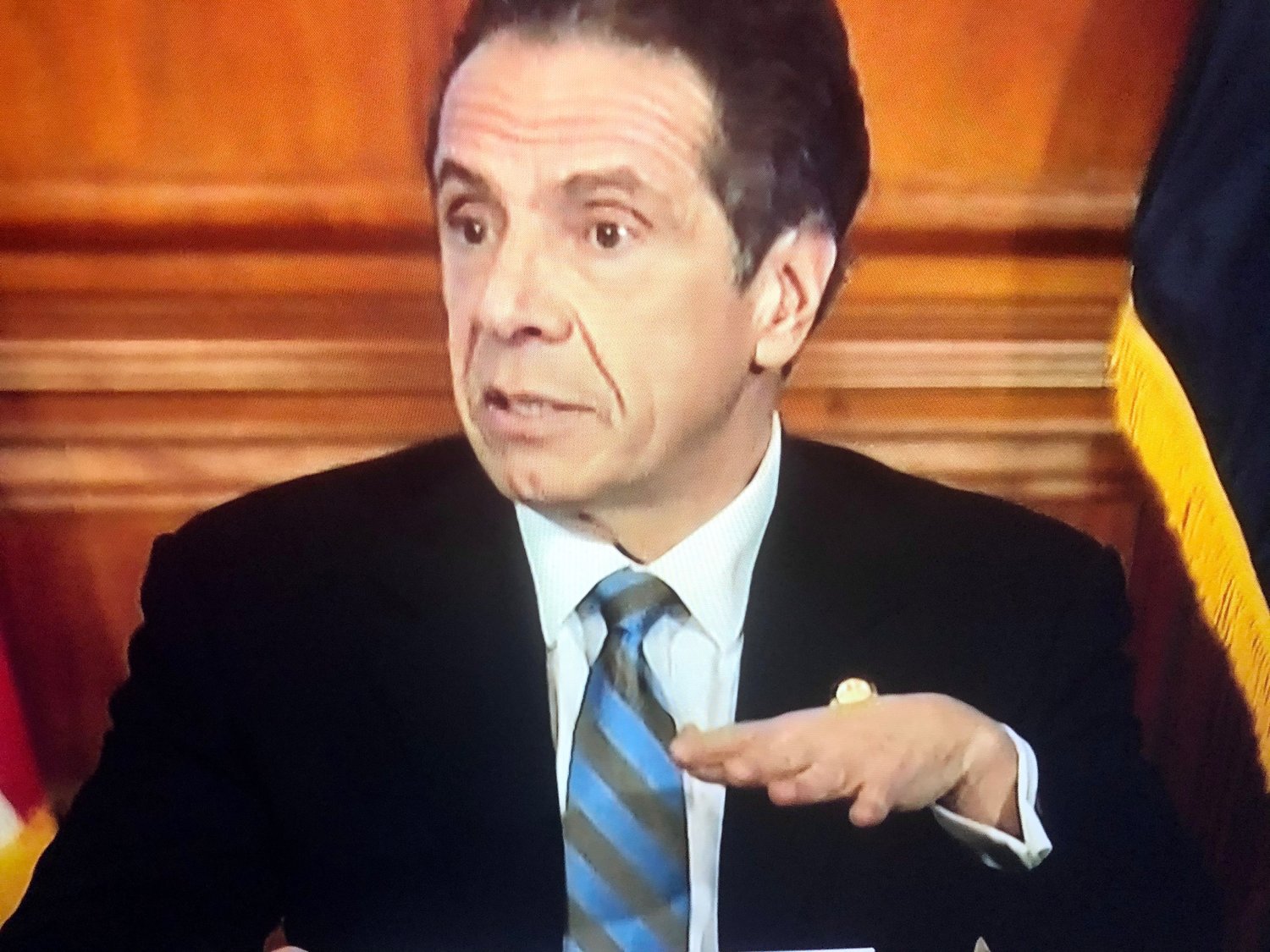Governor Cuomo: Overnight Covid-19 death rate continues to decline
State to undertake widespread antibody testing, he says
Gov. Andrew Cuomo appeared alongside Northwell Health President and CEO Michael Dowling Sunday to deliver “good news” — the statewide Covid-19 death rate continues to decline — while announcing plans to undertake widespread, random antibody testing to determine more precisely New York’s actual infection rate.
Overnight from Saturday into Sunday, 507 people died of the coronavirus in New York, compared to 540 the day before, Cuomo said at Northwell’s Feinstein Institutes for Medical Research in Manhasset. That represents an 8 percent drop in the overnight death rate. The day before, it had fallen by 14 percent.
New hospitalizations also declined, from 2,000 the day before to 1,300, a 35 percent drop.
And new intubations, whereby people are placed on ventilators to enable them to breath, were down also.
If those statistics hold, Cuomo said, “we are past the high point,” and all indications are the infection rate is “on the descent.”
Still, he said, “Thirteen hundred is a lot of people coming into the hospital system.”
State officials are taking a breather with the infection rate appearing to stabilize. He described the crisis “as a mountain that just kept building and building and building,” and he said, he had “no idea where the top of the mountain” was.
“We just pray to God,” he said, that the infection rate “remains down on the other side” of the mountain.
He also noted, “We still have a long way to go.”
The governor urged people to continue social distancing and practice sound hygiene. He worries that people will see the death and new hospitalization rates declining, and then attempt to return to life as normal too soon. That, he said, would jeopardize the progress the state has made over the past 40 days in containing the virus.
In preparing for a reopening of New York’s economy, he said, the state needs greater testing, and it needs more federal funding. Cuomo estimated the state faces a $10 billion to $15 billion deficit. That money will have to be made up somehow. Without federal funding, cuts are likely, he said, noting school districts across the state could see their state aid slashed by 50 percent in 2020-21 without federal assistance.

 44.0°,
Mostly Cloudy
44.0°,
Mostly Cloudy 




